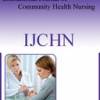Abstract
Title
AN EVALUATION OF THE FREQUENCY AND MANAGEMENT OF HYPERTENSION IN INNER CITY AREAS
Author
Purushothaman M*, Shruthi N, Navya Sri K, Gopagani Murali Krishna, Vijaya Kumari B
Email
vedpurushoth@gmail.com
keyword
Community, Prevalence, Hypertension, Blood Pressure, Semi Urban.p
Abstract
The prevalence of hypertension is higher in semi urban communities than in urban centers. Objective: An
assessment of hypertension prevalence in this locality and the control level of hypertensive individuals is the objective of this
study. Methods: In this study, interviews are conducted prospectively. Stratified random sampling was conducted across the
various compounds to select 400 adults aged 20 and above; a unit of settlement consisting of extended families related by
common ancestors. Interviewer-administered demographic, predisposing factor, and medication history questionnaires were
self-developed, validated, and tested. Blood pressure, weight, and height measurements were also conducted on respondents.
An analysis of the data and the calculation of the Body Mass Index was conducted. Results: There was a 100% response rate
for the questionnaire distribution that was administered by an interviewer, along with measurements of height, weight, and
blood pressure. Among those who responded, the majority were females. Over half the respondents (46.5%) had a BMI
higher than normal, with 15.3% (61) having an obese weight (>30.0kg/m2). Females and males had mean (SD) systolic blood
pressures of 133.3 (3.2) mmHg and 127.4 (3.00), respectively. Mean (SD) diastolic blood pressures were 86.2 (1.7) and 83.9
(2.4). 15.0% (60) of those in the community had previous hypertension, of which 13.8% (55) had it diagnosed by then.
Among the 46 hypertension cases, 11.5% (46) were Stage I and 3.5% (14) were Stage II. Males were slightly more likely to
suffer from hypertension (18.8%) than females (12.5%), with a relative risk (RR) of 1.500 (95% CI 0.9422 to 2.388).
According to the survey, 41.6% of participants 40 years and older were hypertensive, including 70.0% (42/60) of
hypertensive participants and 10.5% (42/400). There were only 31% (17/55) of previously diagnosed cases of hypertension
taking their medication during the survey, 12.7% (07/55) adhered regularly to their medication, and 7.3% (04/55) had
adequate control of their blood pressure. Methyldopa was the main agent prescribed to patients, with 22.8% (12/55) taking it
either alone or along with amiloride and hydrochlorothiazide. Aspirin, amlodipine, atenolol, nifedipine, and lisinopril are also
commonly used by patients. Conclusion: A semi urban community has a prevalence of 15.0% hypertension and a prevalence
of prehypertension of 23.5%. Patients who were previously hypertensive had poor blood pressure control













